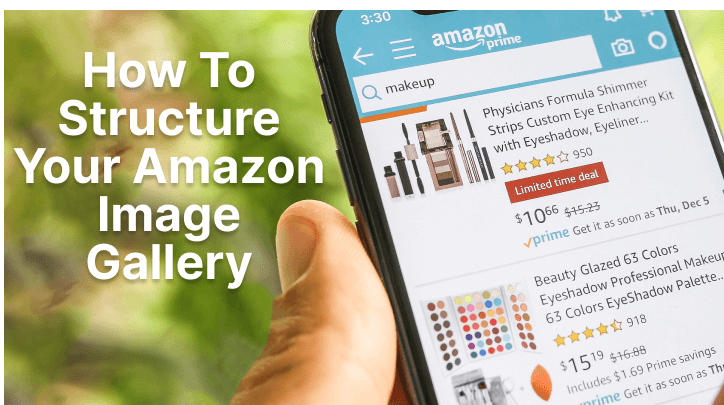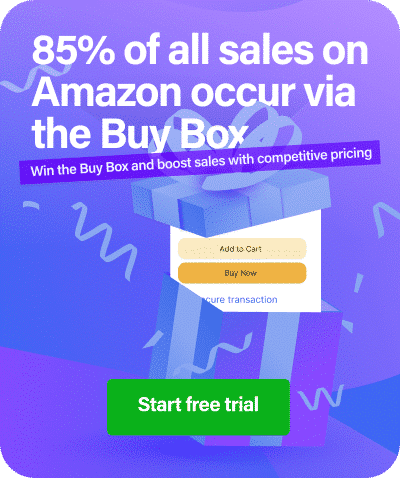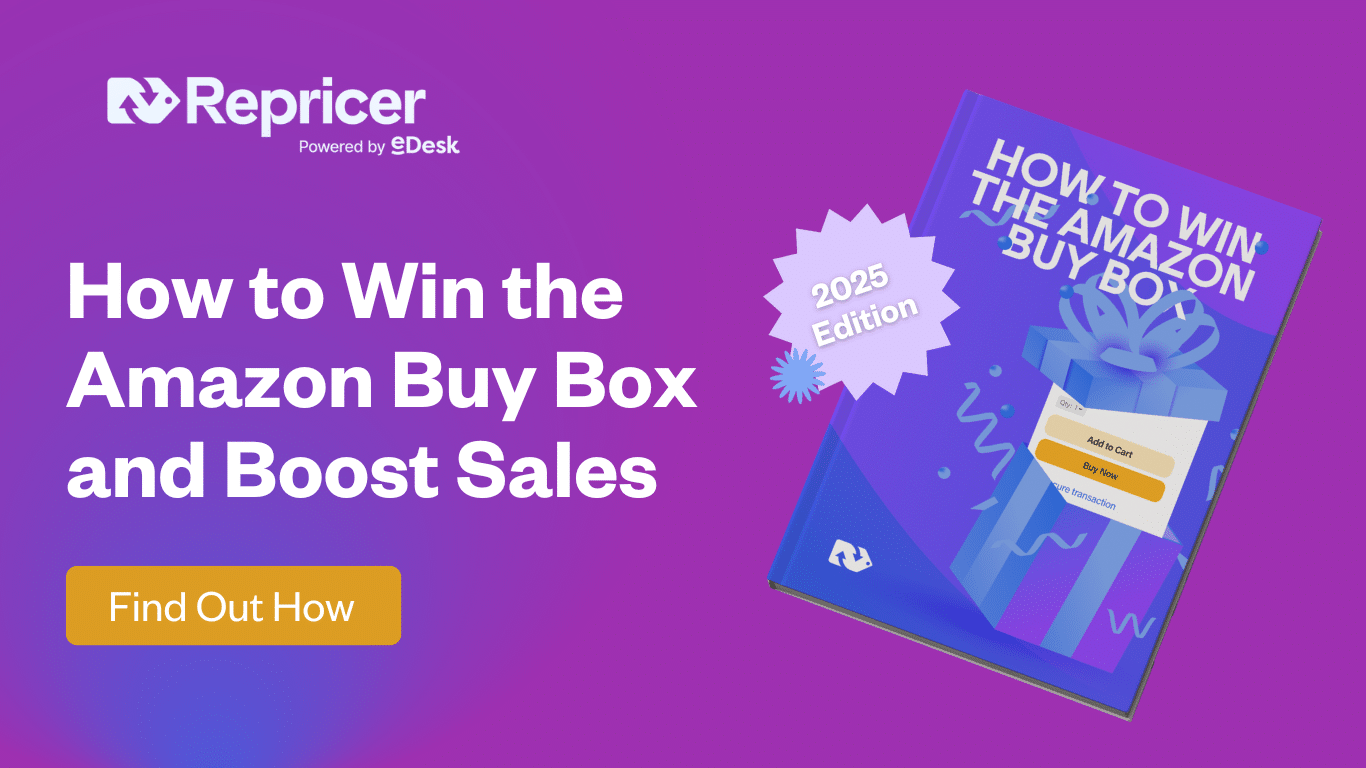Aside from making sure that your listing’s title, bullet points, product description, and price have been fully optimized, you also need a well-structured image gallery to help drive in more sales.
Simply uploading your product images without any kind of strategy will turn off potential buyers and lead to lost sales – and by that, I mean a lot.
In this article, I will show you how to create compelling Amazon gallery images that can significantly boost the conversion rate as well as the CTR (click-through rate) of your Amazon listings.
What are Amazon Gallery Images?
Every Amazon listing requires at least one product image.
Amazon allows you to upload up to 9 different product photos on your listing, creating a gallery for shoppers to check out.

Why Are Amazon Images So Important?
When you enter a store and see a product that interests you, the first thing you usually do is inspect it closely.
You touch, feel, smell, or look at it from different angles to help you decide whether to buy the product or not.

On Amazon, however, you don’t have the luxury of physically touching or smelling a product – you only have your sense of sight to use (or hearing, if a video is available) for checking out an item.
Therefore, the photos you feature on your Amazon listing should be able to paint a clear picture of your product to shoppers – drawing them in as they click on the gallery images one by one.
You’ve probably heard the saying, “A picture paints a thousand words”, right?
According to research, the human brain actually processes visuals 60,000 times faster than text.

That’s exactly why the most effective advertisements you see in printed media use sparse text or none at all.
They all choose to showcase their products or services through ads with high-quality photos that tell an interesting story at first glance.
Do Amazon Images Affect Your Listing’s Conversion Rate?
Once a customer clicks on your product, you are probably thinking that your listing’s title, bullet points, and product description are the main driving force to make them click on the “Buy Now” button.
Unfortunately, that is not always the case.
Your product’s images can actually hold the highest value when it comes to influencing Amazon shoppers’ purchase decisions.
In fact, research says that a whopping 75% of online shoppers decide what to buy based on a product’s images alone!
Professional-looking product photos increase your customer’s trust in your brand, and they also make complex information much easier to understand.With a well-structured image gallery on your Amazon listing, customers are more likely to purchase your product – ultimately leading to a higher conversion rate!
Main Gallery Image
The Main Gallery Image is the first photo on your product detail page, and it is arguably the most important part of your entire listing, next to the product itself.

This is the image that is displayed to customers in their search results, which means that it should show exactly what your product would look like once a customer receives it on their doorstep.
If you are looking to be successful on Amazon, you have to play by the rules – and that includes adhering to Amazon image requirements.
Keep in mind that Amazon only accepts 4 file types for product images: TIFF, JPEG, GIF, or PNG.
Make Your Main Gallery Image Shine
Show The Product Itself
Your main image must only show your product. It cannot have any added text, borders, or props that may confuse the customer.
For example, if you’re selling a laptop, your main image can’t be a photo of the laptop placed on a work desk along with a mobile phone, a cup of coffee, and writing materials.
It has to be a high-quality photo of the laptop on its own.
If your product is a video game, you may use the box art of the game as your main image.
You are not allowed to use your own fan art, drawings, or illustrations. This also applies to books, music CDs, or DVDs.
A Pure White Background
You want customers to view a clean-looking photo of your product, one they click on your listing.
For this reason, Amazon requires your main image to only use pure white (RGB 255, 255, 255) for your product’s background.
This also makes your product appear as if it was floating on your Amazon listing page.

A Close-Up View
The product in your main image should cover 85% to 90% of the entire frame.
Poorly cropping your main image can make the product appear small in thumbnails shown on the search results page, as well as in your ads.
Make An Excellent First Impression
The photo of your product must be professionally lit and photographed, or scanned.
It has to be in focus, and show realistic colors and smooth edges.
Make sure that your main image looks amazing on laptops or desktops, as well as on mobile devices.
You can achieve this by using images that are 1,600 pixels or larger (not more than 10,000 pixels) on the longest side. This also enables the zoom function on your page, which has been shown to boost sales!

Check Out Your Competitors
Having competitors around isn’t always a bad thing. You can actually use competitor listings for finding out ways to help improve your own listing!
Take a peek at your competitor’s main images. Do they look good? Or do you see areas that need improvement?
Try to make your main image stand out from the rest by playing with the colors, product angle, 3D rendering, shadows, and more.
Secondary Gallery Images
Secondary images are the photos that appear below the main image on your product detail page.

While they are not required, secondary images are as important as your main image since they help convince potential buyers to purchase the item you’re selling.
Despite this perk, you would be surprised by the number of listings that only feature 2 or 3 images in their gallery.
Most of the time, sellers just upload photos of the product’s front, back, and packaging – not realizing that shoppers also need photos that show the product’s size, applications, functionality, and features.
To make your listing stand out even more, I highly recommend that you fill up every gallery spot with eye-catching and informative secondary images!
Amazon allows you to upload up to 9 images (including the main image) to your Amazon listing.
However, you will only see 7 images on the main product detail page.
It makes perfect sense to add your most critical images in the first 6-7 slots of the gallery so they can be seen from the product detail page right away.
Main Types of Secondary Images
Before I show you what structure works best for secondary images, you need to be aware of the most common types of images that can be used:
Lifestyle Images
In a nutshell, lifestyle images are pictures of your product being used by real people. This highlights how your product is relevant to your customer’s interests.
Lifestyle images are meant to emotionally influence your customers to purchase your product.
If your product is a dog harness, a good lifestyle image would be a photo of a woman happily walking her dog on a bright, sunny day.

Infographic Images
Visuals are the main medium in which humans consume content.
According to statistics, the average person reads about 20% of a webpage but will view EVERY single image.
For this reason, it makes perfect sense to use your images for explaining the benefits of your product.
Infographics are a visual representation of data, presented through graphics that allow shoppers to digest information much faster.
Adding professionally designed infographics to your secondary images gives you a stronger chance of increasing conversion.

Trust Images
The more your customers trust your brand, the better the chances of them purchasing more products from you in the future.
Customers who trust you will also refer your products to friends and loved ones, which means more sales!
Consider displaying snapshots of positive customer reviews or images of side-by-side product comparisons.
You may also show images of materials used for creating your product or ingredient labels if you are selling nutritional supplements.

Promotion Images
Seal the deal by adding promotional images to your listing.
Create photos that inform customers about price reductions or discounts, or buy 1 get 1 offer.
These images can create a sense of urgency among shoppers, making them feel like they will miss out if they don’t purchase your product now.
The Logic Behind Designing Gallery Images That Convert
Your image gallery should flow naturally, as if it was telling a story to your customers.
You want the images to take your customers one step closer to making the purchase as they browse through each one.
Think of your gallery images like a funnel. The flow of your gallery images needs to answer the questions in the image below.

Here is an example of how this can be applied to a very common everyday product: “Peanut Butter!”
This image gallery below follows exactly the framework above.

Final Thoughts
Through an optimized image gallery, you allow potential customers to quickly get all the information they want without reading through long paragraphs.
The better your images are, the greater chance you have of catching a casual shopper’s attention and converting them into a loyal customer.
Now is the right time to equip your listing with images that stand out – that might be the only thing keeping you from dominating the Amazon marketplace!





